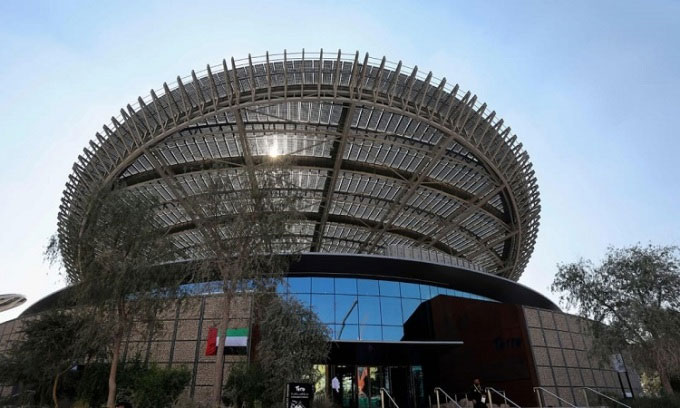With energy trees and 1,000 solar panels on its roof, the Sustainability Pavilion can generate up to 4 gigawatt-hours of electricity per year.
The Sustainability Pavilion at the Expo 2020 Dubai complex is covered by a 134-meter-wide steel dome that can accommodate 1,000 solar panels, making this structure the most impressive architectural design of the event. It is also one of the most technologically advanced buildings, capable of self-generating electricity, water, and cooling.
The building can produce up to 4 gigawatt-hours of electricity annually, sufficient to power 370 households, utilizing photovoltaic panels on the dome and hundreds of additional panels placed on 18 “energy trees” scattered around the structure. These trees are made from synthesized carbon fiber, a material commonly used in the aerospace and luxury yacht industries. To optimize performance, each tree features a motorized swivel joint that allows it to track the sun throughout the day, according to Andrew Whalley, chairman of Grimshaw Studio in the UK, the design firm behind the building.
The energy produced by the building powers the cooling system and facilitates the collection and recycling of water. Rainwater and dew are gathered through the main dome and a network of “water trees.” This network of trees provides shade during the day and collects water at night, utilizing temperature differentials and the condensation process. The system filters and recycles potable water while wastewater is cleaned using a reed bed, a natural filtration method based on aquatic plants.

Solar panels on the roof of the Sustainability Pavilion. (Photo: CNN)
To keep the exhibition space cool, the building is partially submerged. The architects designed most of the exhibition area to be underground. The remaining space is covered by well-insulated roofing, forming a protective barrier against external weather conditions.
The steel dome design of the building is inspired by the ghaf tree, a symbol of the United Arab Emirates. The dome absorbs sunlight, providing shade for everything beneath it and directing wind into the sunken courtyard. To extend the dome over the building, the architects used 70-meter-long cantilever beams and an ultra-lightweight grid structure. The energy and water trees are also designed to mimic the dragon blood tree, a native plant of Yemen known for its umbrella-shaped foliage that helps prevent evaporation, an adaptation to arid conditions.
Like other buildings in the exhibition complex, this structure will be repurposed for another use, serving as a community science center.


















































